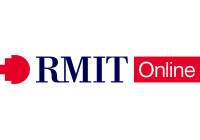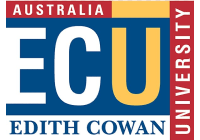Project management is a crucial aspect of any business, ensuring that tasks are completed efficiently and effectively. But with so many methodologies available in Australia, which one should you choose? This article aims to provide a comprehensive guide to project management methodologies in Australia, giving you the information you need to make an informed decision.
So, what are the available methodologies for project management in Australia? From Agile to Waterfall and everything in between, this article will cover each methodology's pros and cons, including how they are implemented and their success rates. Whether you're a seasoned project manager or just starting, this article is for you.
If you're looking to improve your project management skills, gain a competitive edge, or simply learn more about the different methodologies available in Australia, this article is a must-read.
So, without further ado, let's dive into the world of project management and discover which methodology is right for your business. And to ensure the accuracy and reliability of the information provided, we have consulted with leading project management experts in Australia.
Quick Links To Online Project Management Degree Courses
Southern Cross University
Master of Project Management online
- 2 years part-time
- $2,990 per unit, FEE-HELP available
- Jan, Mar, May, July, Aug, Oct
RMIT Online
Graduate Diploma in Project Management
- 16 months intensive, part-time
- Jan, Mar, May, July, Aug, Oct
- $3,840 per course, FEE-HELP available
Edith Cowan University
Graduate Certificate of Project Management Online
- 6 months (minimum) part-time
- Jan, Mar, May, Jul, Sept & Nov
- $13,020 FEE-HELP available
What Is Project Management?
The process of planning, organising, and managing resources to accomplish a set of predetermined goals and objectives is referred to as project management. In order to effectively finish a project, it is necessary to define its scope, objectives, and the activities associated with achieving those objectives.
Methodologies of project management are the collections of practices, concepts, and procedures utilised in managing a project from beginning to end. They assist project managers in maximising the use of available resources, enhancing communication, and completing projects on schedule and without exceeding the allotted spending limit.
Methodologies for project management are utilised extensively across a variety of sectors in Australia, including the construction, information technology (IT), healthcare, and financial sectors.
Traditional Project Management Methodology
The traditional project management methodology, often known as the Waterfall technique, a linear and sequential approach to project management, was developed many years ago. It is comprised of five separate stages, which are the initiation, planning, execution, monitoring and closing phases. Each phase of the project is responsible for delivering certain deliverables, and the project cannot go to the next phase until the phase that came before it has been finished.
The goal of the project, its objectives, the stakeholders involved, and the scope of the work all need to be defined during the start phase. Obtaining clearance to move forth with the project is another part of this process, along with the identification of risks, restrictions, and assumptions.
Developing a comprehensive strategy for the project is one of the tasks included in the planning process. This plan must account for the project's timeline, budget, resources, and quality needs. It also includes producing a project charter that outlines the project's vision and goals, as well as building a work breakdown structure (WBS) to partition the whole project into a series of tasks that may be successfully completed.
During the phase known as "execution," the project plan is put into action by carrying out the activities and responsibilities outlined in the WBS. This involves delegating responsibilities to individual members of the team, monitoring their work, and responding appropriately to any problems or unexpected developments.
During the monitoring phase, you will be responsible for tracking and analysing the progress of the project. This will entail making comparisons between actual progress and the plan for the project, locating and addressing difficulties, and engaging with stakeholders.
During the closure phase, the project is brought to a successful conclusion, and the final good or service is provided to the client. It comprises ensuring that all of the project criteria have been satisfied, getting clearance from the people who have a stake in the project, and carrying out a post-project assessment to determine what was learnt and where there is room for improvement.
The traditional technique of project management is appropriate for undertakings that have well-defined and consistent needs, results that can be reasonably anticipated, and a low degree of ambiguity or complexity. Large-scale projects that demand a great quantity of planning and documentation lend themselves particularly well to its use.
However, the conventional practice for project management does come with a few limitations. It is possible for it to be inflexible and stiff, given that major rework and delays may be required in the event that the project's scope, timeframe, or requirements are modified. Due to the requirement that each step be finished before moving on to the next one, it is impossible to get ongoing input and make improvements.
The flexibility, adaptability, and responsiveness to change that agile project management approaches offer has contributed to their meteoric rise in popularity over the past several years. Despite this, traditional project management methodology continues to be an effective strategy for certain kinds of projects. Project managers should select the management technique most suited to their projects' requirements and limitations.
Agile Project Management Methodology
The Agile project management technique is a flexible and iterative approach to project management that focuses on delivering value to the client via constant feedback and improvement.
This approach to project management was developed by Scrum, which is an offshoot of the original agile development methodology. It is meant to handle changes in project scope, requirements, and schedules, which are frequent in today's fast-paced and unpredictable corporate world. These changes are accommodated by the fact that it is built to do so.
The iterations or sprints that are created throughout the process of using the agile approach are meant to be small enough to be easily managed. Each iteration normally lasts between one to four weeks and requires a cross-functional team to collaborate in order to provide a product or service that is functioning. The team gets together on a regular basis to discuss the project's status, identify any problems that have arisen, and make any necessary adjustments to the project plan.
The Agile technique places a higher importance on people and interactions than procedures and technologies. It also places a higher value on functioning software than extensive documentation, customer participation as opposed to contract negotiation, and adapting to change as opposed to following a predetermined plan.
This implies that the team works closely with the client to understand the customer's needs, prioritise the customer's requirements and features, and offer value as soon as possible and as frequently as possible.
The Agile methodology makes use of a variety of tools and approaches, such as the following, to support its guiding principles:
- Scrum: a framework for managing and controlling the software development process, which includes daily stand-up meetings, sprint planning, sprint reviews, and sprint retrospectives.
- Kanban: a visual tool for managing workflow and limiting work in progress, which involves using a board with columns for different stages of work and cards for individual tasks.
- User stories: short, simple descriptions of a feature or requirement from the user's perspective, which are used to guide the development process and prioritise work.
The traditional approach to project management has a few disadvantages compared to the advantages of the agile technique. It shortens the amount of time needed to bring a product to market since the team can provide functioning software or features more quickly.
It encourages team members and stakeholders to work together and communicate more effectively, which ultimately results in improved alignment with and comprehension of the project's goals and needs. It also makes it possible for the team to react fast to changes, which lowers the danger of the project failing or being delayed.
However, the Agile methodology does have its share of difficulties. It necessitates a significant amount of engagement and communication on the part of the client, which in certain projects may be challenging to handle.
It is also necessary to have a flexible and adaptive team that is capable of functioning successfully in an atmosphere that is both fast-paced and dynamic. Lastly, it is possible that it is not appropriate for projects that have predetermined budgets, schedules, or requirements, all of which call for an approach that is more regulated and controlled.
Scrum Project Management Methodology
Scrum is an Agile project management methodology that places emphasis on collaboration, self-organisation, and incremental progress. It is particularly common in the field of software development, but its applicability extends to any endeavour that calls for adaptation, responsiveness, and flexibility.
The Scrum process includes dividing the project into smaller, more manageable chunks known as sprints. These sprints generally span between one and four weeks. At the conclusion of each sprint, the team collaborates in order to present stakeholders with a fully functional version of the product or service that they have been developing.
The following are the essential functions in the Scrum methodology:
- Product owner: responsible for defining the product vision, prioritising the product backlog, and ensuring that the team delivers value to the customer.
- Scrum master: responsible for enabling the Scrum process, instructing the team on Agile concepts and practises, and removing any barriers or impediments that stand in the way of development.
- Development team: in charge of planning, creating, testing, and delivering the product or service, while working cooperatively and independently to achieve their objectives.
Scrum methodology also involves several ceremonies or events that support the Agile principles, such as:
- Sprint planning: a meeting at the beginning of each sprint to plan the work to be done based on the product backlog and the team's capacity.
- Daily Scrum: a short meeting held every day to review progress, identify issues, and plan the day's work.
- Sprint review: a meeting at the end of each sprint to review the product increment, gather feedback from stakeholders, and plan the next steps.
- Sprint retrospective: a meeting at the end of each sprint to reflect on the process, identify areas for improvement, and plan changes for the next sprint.
The traditional approach to project management has a few drawbacks compared to the advantages of the Scrum methodology. It encourages cooperation, openness, and self-organisation, all of which contribute to a better alignment of project objectives and requirements as well as a better knowledge of those goals.
Additionally, it enables quick and frequent feedback, which helps to reduce the possibility of the project failing or being delayed. Last, but not least, it grants the group the authority to make choices and assumes ownership of the project, resulting in greater involvement and drive.
Despite this, the Scrum technique is not without its difficulties. It is necessary to have a very high level of discipline and rigour, both of which may be challenging to sustain in some projects. It is also necessary to have a product vision and backlog that are crystal clear and clearly defined, which can be challenging to do in some circumstances.
Lastly, it is possible that it is not appropriate for projects with predetermined budgets, schedules, or requirements, all of which call for an more regulated and controlled approach.
PRINCE2 Project Management Methodology
The PRINCE2 (Projects in Controlled Environments) project management technique is a process-based approach that focuses on project organisation, management, and control. The Projects in Controlled Environments (PICE) consortium developed the methodology. It is already quite popular in the UK, and there are signs that it may soon become so in other nations.
The PRINCE2 methodology is a systematic approach to the management of projects that incorporates a number of phases, such as the initiation, planning, execution, monitoring, and closing phases. In addition to that, it consists of a number of items for management, such as the document for initiating the project, the project plan, the risk register, and the problem log.
The following is a list of the fundamental tenets of the PRINCE2 methodology:
- Business justification: ensuring that the project is aligned with the organisation's strategic objectives and provides value to the business.
- Continuous learning: learning from the experience of previous projects and adapting the process to improve performance.
- Defined roles and responsibilities: clarifying the roles and responsibilities of the project team and stakeholders.
- Management by stages: dividing the project into manageable stages and reviewing progress and results at the end of each stage.
- Management by exception: empowering the project manager to make decisions within predefined limits and escalating issues beyond these limits.
PRINCE2 methodology also includes several themes, such as:
- Organisation: defining the project team's structure and each member's roles and responsibilities.
- Quality: ensuring the project meets the required standards and delivering high-quality products.
- Risk: identifying, assessing, and managing risks throughout the project lifecycle.
- Change: managing changes to the project scope, schedule, and budget.
- Progress: monitoring and controlling project progress, including schedule, budget, and quality.
PRINCE2 methodology also includes several processes, such as:
- Starting a project: defining the project objectives, scope, and stakeholders and establishing the project management team.
- Initiating a project: developing the project initiation document, plan, and risk register.
- Directing a project: providing direction and control, including approving the project plan and monitoring progress.
- Controlling a stage: monitoring and controlling the project stage, including managing issues and risks and updating the project plan.
- Managing product delivery: ensuring that the project products are delivered to the required quality standards.
- Closing a project: formalising the project closure, including obtaining acceptance of the project deliverables and evaluating the project results.
When compared to alternative approaches to project management, the PRINCE2 methodology possesses a number of distinct advantages. It offers a method of project management that is highly organised and assures both clarity and control throughout the whole lifespan of the project.
In addition to this, it places an emphasis on business reasons, making certain that the project contributes positively to the company. In conclusion, it is versatile and malleable, making it possible to tailor it to the particular requirements of the project through the use of modification.
Despite this, the PRINCE2 technique is not without its difficulties. It is possible that its implementation may be tough and complex, necessitating a large amount of training and prior expertise. It is also possible for it to be bureaucratic, which might result in an excessive amount of documentation and paperwork.
Lastly, it may not be appropriate for projects that have significant degrees of ambiguity or complexity since these kinds of projects need a strategy that is more flexible and adaptive.
Six Sigma Project Management Methodology
Six Sigma is a methodology that places a significant emphasis on lowering the levels of unpredictability and flaws that are present in a process. The industrial sectors frequently employ this strategy for quality improvement since it is data-driven and uses statistical analysis.
On the other hand, it may also be utilised in service-based fields, such as the medical and financial sectors. The purpose of the Six Sigma methodology is to eliminate defects from a process to a level of 99.99966%.
The Six Sigma methodology is based on a five-step process known as DMAIC: Define, Measure, Analyze, Improve, and Control. Each stage entails its own unique collection of tasks and the results of one phase feed directly into the preparation of the following step.
- Define: In this step, the project team identifies the problem and defines the project scope. This involves understanding the customer's needs and requirements, as well as setting measurable objectives for the project.
- Measure: In this step, the project team collects data on the process and establishes a baseline for performance. This involves identifying key performance indicators (KPIs) and gathering data on them.
- Analyse: In this step, the project team analyses the data collected in the Measure step to identify the root causes of the problem. This involves using statistical tools and techniques to identify patterns and trends in the data.
- Improve: In this step, the project team develops and implements solutions to address the root causes identified in the Analyse step. This involves testing and validating the solutions to ensure they are effective.
- Control: In this step, the project team establishes a control plan to ensure that the improvements made in the Improve step are sustained over time. This involves monitoring the process and implementing corrective actions when necessary.
The Six Sigma technique places a strong emphasis on data and metrics, which is one of its primary advantages. Because of this, a clear picture of the performance of a process is provided, and the project team is given the ability to make decisions based on facts. In addition, the Six Sigma technique is a very organised and disciplined approach that may assist assure outcomes that are consistent and reproducible.
However, one of the potential drawbacks of Six Sigma is that it can be time-consuming and resource-intensive. This is one of the potential drawbacks. The technique calls for a substantial investment in data gathering and analysis, which might provide a challenge for a number of different kinds of organisations. In addition, the Six Sigma technique might not be suitable for initiatives whose primary objective is to innovate or be creative.
In spite of these drawbacks, the Six Sigma technique has been extensively implemented across a wide variety of sectors and has a well-documented history of success in enhancing the quality and effectiveness of many processes.
Critical Path Method (CPM) Project Management Methodology
The Critical Path Method, sometimes known as CPM, is a strategy for managing projects that focuses on pinpointing a project's most important path to completion.
The critical route is the order in which tasks must be completed in order for the project to be completed on time. In fields such as building and engineering, where it is vital to finish projects within a predetermined amount of time, the CPM approach is utilised on a massive scale.
The CPM approach is comprised of the following four stages:
- Define Activities: In this step, the project team breaks down the project into individual activities and defines the dependencies between them. This involves identifying the order in which the activities need to be completed and determining which activities can be performed concurrently.
- Sequence Activities: In this step, the project team establishes the order in which the activities will be performed. This involves creating a network diagram that shows the relationships between the activities.
- Estimate Duration: The team working on the project will now make their best guess as to how long each action will take. This requires taking into consideration things like the difficulty of the activity, the resources that will be needed, and any outside circumstances that may have an effect on how long it will take.
- Determine the Critical Path: In this step, the project team identifies the critical path of the project. This is the sequence of activities that must be completed on time in order to meet the project deadline. The critical path is determined by identifying the activities with the longest durations and ensuring that they are completed within the allotted timeframe.
The CPM approach is extremely useful for determining whether or not a project will have potential delays and for assuring that the project will be finished within the allotted amount of time. The team working on the project will be able to allocate resources more efficiently and discover possible bottlenecks in the process if they concentrate on the crucial path.
Implementing the CPM methodology, on the other hand, can be a challenging and time-consuming endeavour due to the method's inherent complexity. Especially for big and complicated projects, establishing connections between tasks and calculating durations can be challenging. In addition, the CPM approach is not necessarily suited to projects that call for a high level of adaptation or flexibility.
In spite of these drawbacks, the CPM approach has found widespread use across a variety of sectors and has shown a history of success in terms of finishing projects on time and without exceeding the allotted spending.
Benefits of Using Project Management Methodologies
The application of several approaches for project management may confer a variety of benefits on organisations as well as project teams. The following is a list of the primary benefits of utilising various project management methodologies:
- Consistency: Project management methodologies provide a consistent framework for managing projects, which helps to ensure that projects are completed efficiently and effectively. Using a standardised approach, project teams can avoid confusion and ensure everyone is working towards the same goals.
- Improved Communication: Project management methodologies provide a common language and set of tools that can be used to communicate project information and progress. This helps to ensure that all stakeholders are informed and can make informed decisions based on the same information.
- Greater Control: Project management methodologies provide a structured approach to planning and controlling projects, which helps project managers to identify and address potential issues before they become major problems. This can help to minimize risks and ensure that projects stay on track.
- Improved Quality: Project management methodologies provide a framework for ensuring that projects are completed to a high standard of quality. This includes the use of quality assurance processes, such as testing and inspection, to ensure that deliverables meet the required specifications.
- Increased Efficiency: Project management methodologies can streamline project processes and reduce inefficiencies. By providing a structured approach to planning and execution, project teams can identify and eliminate unnecessary tasks and focus on the activities that add the most value.
- Better Stakeholder Management: Project management methodologies provide a framework for managing stakeholder expectations and communication. By involving stakeholders in the planning and execution of projects, project teams can ensure that stakeholder needs are met and that there is a shared understanding of project goals and objectives.
Conclusion
In summing up, project management in Australia is a dynamic area that is both complicated and involves a range of approaches in order to effectively finish projects on time and under budget. Project managers are able to select the most appropriate strategy for their particular project demands and requirements when they have a solid awareness of the many techniques that are at their disposal.
A wide variety of solutions are available, ranging from the time-honoured Waterfall technique to more adaptable strategies like Agile and Scrum. Each technique has its own set of advantages and disadvantages; in order to identify which one is the most suitable for their projects, project managers need to do a thorough analysis of their objectives and the dynamic of their teams.
No matter which approach is used for the project, successful communication, teamwork, and the active participation of stakeholders are all very necessary. Project managers have the ability to overcome obstacles and accomplish their project objectives if they cultivate an environment that encourages open communication and makes use of tools and methods that encourage cooperation.
Do you manage projects in Australia, where you live? Which approach to project management do you find to be the most successful in your area of work? In the comments section below, please share your opinions and experiences.
Content Summary
- Project management is a crucial aspect of any business, ensuring that tasks are completed efficiently and effectively.
- From Agile to Waterfall and everything in between, this article will cover each methodology's pros and cons, including how they are implemented and their success rates.
- Methodologies for project management are utilised extensively across a variety of sectors in Australia, including the construction, information technology (IT), healthcare, and financial sectors.
- Developing a comprehensive strategy for the project is one of the tasks included in the planning process.
- During the monitoring phase, you will be responsible for tracking and analysing the progress of the project.
- The traditional technique of project management is appropriate for undertakings that have well-defined and consistent needs, results that can be reasonably anticipated, and a low degree of ambiguity or complexity.
- However, the conventional practice for project management does come with a few limitations.
- Project managers should select the management technique most suited to their projects' requirements and limitations.
- The Agile project management technique is a flexible and iterative approach to project management that focuses on delivering value to the client via constant feedback and improvement.
- Scrum: a framework for managing and controlling the software development process, which includes daily stand-up meetings, sprint planning, sprint reviews, and sprint retrospectives.
- It encourages team members and stakeholders to work together and communicate more effectively, which ultimately results in improved alignment with and comprehension of the project's goals and needs.
- However, the Agile methodology does have its share of difficulties.
- It necessitates a significant amount of engagement and communication on the part of the client, which in certain projects may be challenging to handle.
- Scrum is an Agile project management methodology that places emphasis on collaboration, self-organisation, and incremental progress.
- Product owner: responsible for defining the product vision, prioritising the product backlog, and ensuring that the team delivers value to the customer.
- Scrum master: responsible for removing any roadblocks or impediments to progress, enabling the Scrum process, and instructing the team on Agile concepts and practices.
- The traditional approach to project management has a few drawbacks compared to the advantages of the Scrum methodology.
- The PRINCE2 (Projects in Controlled Environments) project management technique is a process-based approach that focuses on the organisation, management, and control of projects.
- The methodology was developed by the Projects in Controlled Environments (PICE) consortium.
- The PRINCE2 methodology is a systematic approach to the management of projects that incorporates a number of phases, such as the initiation, planning, execution, monitoring, and closing phases.
- Business justification: ensuring that the project is aligned with the organisation's strategic objectives and provides value to the business.
- When compared to alternative approaches to project management, the PRINCE2 methodology possesses a number of distinct advantages.
- It offers a method of project management that is highly organised and assures both clarity and control throughout the whole lifespan of the project.
- In conclusion, it is versatile and malleable, making it possible to tailor it to the particular requirements of the project through the use of modification.
- The purpose of the Six Sigma methodology is to eliminate defects from a process to a level of 99.99966%.
- The Six Sigma methodology is based on a five-step process known as DMAIC: Define, Measure, Analyze, Improve, and Control.
- The Six Sigma technique places a strong emphasis on data and metrics, which is one of its primary advantages.
- In spite of these drawbacks, the Six Sigma technique has been extensively implemented across a wide variety of sectors and has a well-documented history of success in enhancing the quality and effectiveness of many processes.
- Critical Path Method (CPM) Project Management Methodology
- The Critical Path Method, sometimes known as CPM, is a strategy for managing projects that focuses on pinpointing a project's most important path to completion.
- The critical route is the order in which tasks must be completed in order for the project to be completed on time.
- Implementing the CPM methodology, on the other hand, can be a challenging and time-consuming endeavour due to the method's inherent complexity.
- In addition, the CPM approach is not necessarily suited to projects that call for a high level of adaptation or flexibility.
- In spite of these drawbacks, the CPM approach has found widespread use across a variety of sectors and has shown a history of success in terms of finishing projects on time and without exceeding the allotted spending.
- The application of several approaches for project management may confer a variety of benefits on organisations as well as project teams.
- Project management methodologies provide a consistent framework for managing projects, which helps to ensure that projects are completed efficiently and effectively.
- Project management methodologies provide a framework for ensuring that projects are completed to a high standard of quality.
- By providing a structured approach to planning and execution, project teams can identify and eliminate unnecessary tasks and focus on the activities that add the most value.
- Project management methodologies provide a framework for managing stakeholder expectations and communication.
- By involving stakeholders in the planning and execution of projects, project teams can ensure that stakeholder needs are met and that there is a shared understanding of project goals and objectives.
- In summing up, project management in Australia is a dynamic area that is both complicated and involves a range of approaches in order to effectively finish projects on time and under budget.
- Project managers are able to select the most appropriate strategy for their particular project demands and requirements when they have a solid awareness of the many techniques that are at their disposal.
- Each technique has its own set of advantages and disadvantages; in order to identify which one is the most suitable for their projects, project managers need to do a thorough analysis of their objectives and the dynamic of their teams.
- No matter which approach is used for the project, successful communication, teamwork, and the active participation of stakeholders are all very necessary.
- Project managers have the ability to overcome obstacles and accomplish their project objectives if they cultivate an environment that encourages open communication and makes use of tools and methods that encourage cooperation.
FAQs About Project Management
Project management is the process of planning, organising, executing, and controlling a project to achieve specific goals and objectives efficiently.
Project management is essential to ensure successful project delivery, including meeting project requirements, scope, timelines, resources, and risks while satisfying stakeholders' needs and expectations.
Australia's main project management methodologies include Agile, Scrum, Kanban, Lean, PRINCE2, Six Sigma, Waterfall, Critical Path Method, and Adaptive.
To choose the right project management methodology, you must consider your project requirements, scope, timelines, resources, and risks and match them with the methodology's characteristics and suitability.
Project management tools and software can help you manage your project efficiently by providing task management, resource allocation, scheduling, collaboration, communication, and reporting features.





